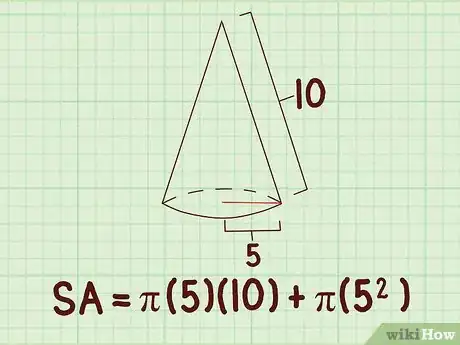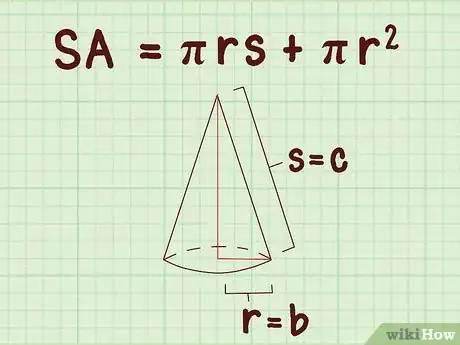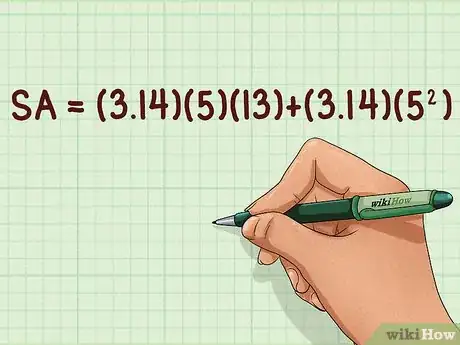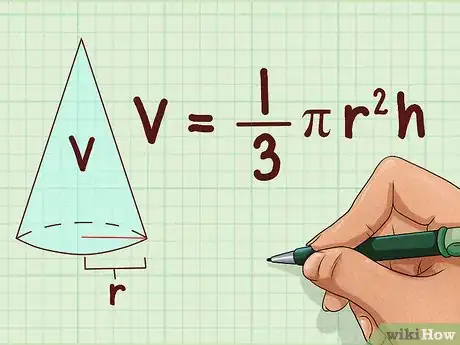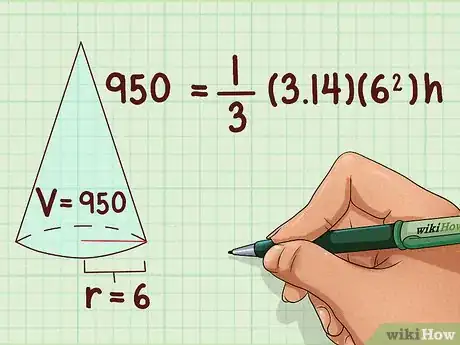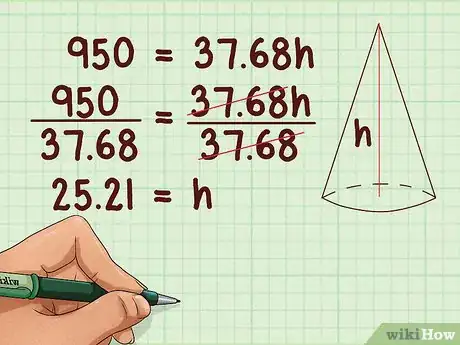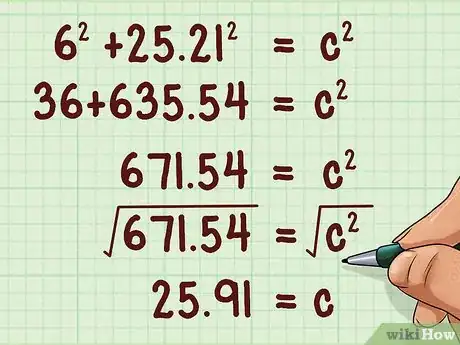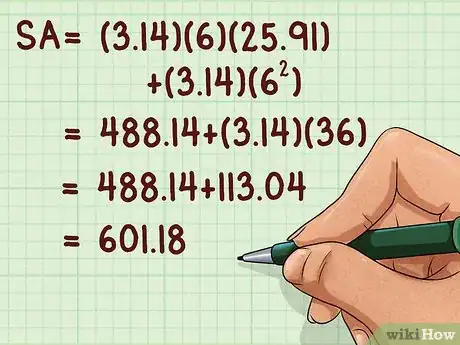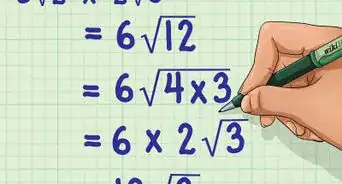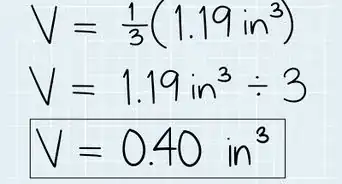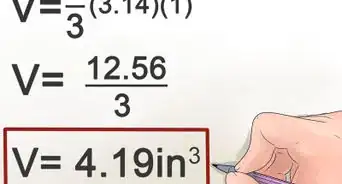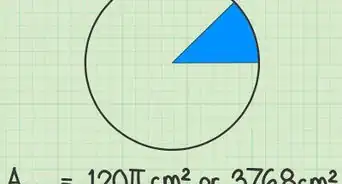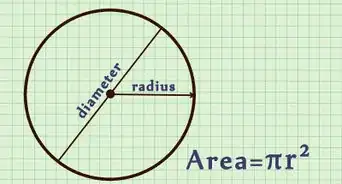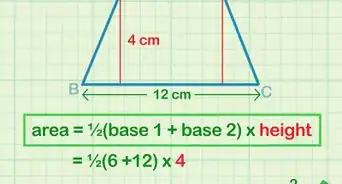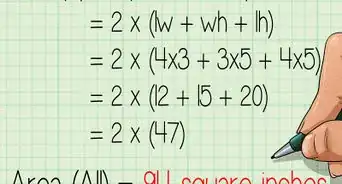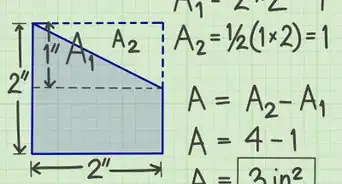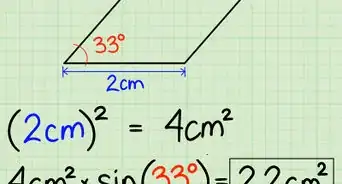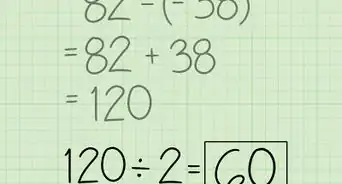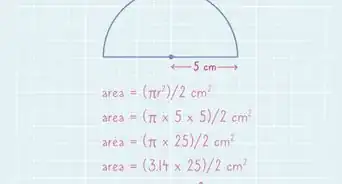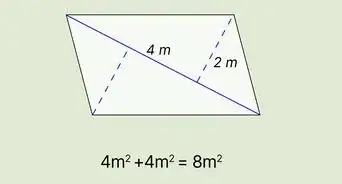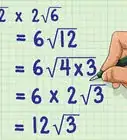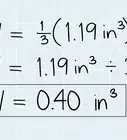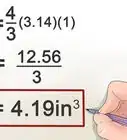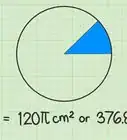This article was co-authored by wikiHow Staff. Our trained team of editors and researchers validate articles for accuracy and comprehensiveness. wikiHow's Content Management Team carefully monitors the work from our editorial staff to ensure that each article is backed by trusted research and meets our high quality standards.
There are 9 references cited in this article, which can be found at the bottom of the page.
This article has been viewed 233,495 times.
Learn more...
The surface area of a cone is the sum of the lateral surface area and the base surface area. If you know the radius of the base and the slant height of the cone, you can easily find the total surface area using a standard formula. Sometimes, however, you might have the radius and some other measurement, such as the height or volume of the cone. In these instances, you can use the Pythagorean Theorem and the volume formula to derive the slant height, and thus the surface area of the cone.
Steps
If You Know the Radius and Slant Height
-
1Set up the formula for the surface area of the cone. The formula is , where equals the surface area of the cone, equals the length of the radius of the cone’s base, and equals the slant height of the cone.[1]
- The total surface area of a cone is equal to the sum of the lateral surface area () and the base area (), since the base of a cone is a circle.
- The slant height is the diagonal distance from the top vertex of the cone to the edge of the base.[2]
- Make sure you don’t confuse the “slant height” with the “height,” which is the perpendicular distance between the top vertex to the base.[3]
-
2Plug the value of the radius into the formula. This length should be given, or you should be able to measure it. Make sure you substitute for both variables in the formula.
- For example, if the radius of the base of a cone is 5 cm, your formula will look like this: .
Advertisement -
3Plug the value of the slant height into the formula. This length should be given, or you should be able to measure it.
- For example, if the slant height of a cone is 10 cm, your formula will look like this: .
-
4Calculate the lateral surface area of the cone (). To do this, multiply the radius, slant height, and . If you are not using a calculator, use 3.14 as the value of .[4]
- For example:
- For example:
-
5Calculate the area of the cone’s base (). To do this, square the radius of the base, then multiply by . If you are not using a calculator, use 3.14 as the value of .[5]
- For example:
- For example:
-
6Add the lateral surface area and the base area of the cone. This will give you the total surface area of the cone, in square units.
- For example:
So, the surface area of a cone with a radius of 5 cm and a slant height of 10 cm is 235.5 square centimeters.
- For example:
If You Know the Radius and the Perpendicular Height
-
1Set up the formula for the Pythagorean Theorem. The formula is , where and equal the side lengths of a right triangle, and equals the length of the hypotenuse (the side opposite the right angle).[6]
-
2Plug the length of the radius and height into the formula. You will use the radius and height of the cone as the two sides of a right triangle. Substitute the radius for the variable and the height for the variable .
- For example, if the radius of a cone is 5 cm and the height is 12 cm, your formula will look like this: .
-
3Square the lengths of the radius and height, then add. Remember that squaring a number means to multiply it by itself.
- For example:
- For example:
-
4Take the square root of each side of the equation. This will give you the length of the hypotenuse of the right triangle, which is equal to the slant height of the cone.[9]
- For example:
So, the slant height of the cone is 13 cm.
- For example:
-
5Set up the formula for the surface area of the cone. The formula is , where equals the surface area of the cone, equals the length of the radius of the cone’s base, and equals the slant height of the cone.[10]
- The total surface area of a cone is equal to the sum of the lateral surface area () and the base area (, since the base of a cone is a circle).
-
6Plug all the known values into the formula. The radius should be given, and you already calculated the slant height. Make sure you use the slant height in the surface area formula, not the (perpendicular) height. If you are not using a calculator, use 3.14 for
- For example, for a cone with a radius of 5 cm and a slant height of 13 cm, your formula will look like this: .
-
7Multiply to find the lateral area and the base area. Then, add these products together. The sum will give you the total surface area of the cone in square units.[11]
- For example:
So, the surface area of a cone with a radius of 5 cm and a height of 12 cm is 282.6 square centimeters.
- For example:
If You Know the Radius and the Volume
-
1Set up the formula for the volume of a cone. The formula is , where equals the volume of the cone, equals the radius of the cone’s base, and equals the perpendicular height of the cone.[12]
-
2Plug the known values into the formula. You should know the volume and the length of the radius. If not, you cannot use this method. If you are not using a calculator, use 3.14 for .
- For example, if you know a cone has a volume of 950 cubic centimeters and a radius of 6 centimeters, your formula will look like this: .
-
3Complete the multiplication. First, square the radius, then multiply that value by . Then, multiply that product by . This will give you the coefficient for the variable.
- For example:
- For example:
-
4Divide each side by the coefficient. This will give you the value of , which is the perpendicular height of the cone. You will need this information to find the slant height of the cone, which is necessary to know when solving for the surface area.
- For example:
So, the height of the cone is 25.21 cm.
- For example:
-
5Set up the formula for the Pythagorean Theorem. The formula is , where and equal the side lengths of a right triangle, and equals the length of the hypotenuse (the side opposite the right angle).[15]
-
6Plug the length of the radius and height into the formula. You will use the radius and height of the cone as the two sides of a right triangle. Substitute the radius for the variable and the height for the variable
- For example, if the radius of a cone is 6 cm and the height is 25.21 cm, your formula will look like this: .
-
7Solve for . This will give you the length of the right triangle’s hypotenuse, which is also the slant height of the cone.
- For example:
So, the slant height of the cone is 25.91 cm.
- For example:
-
8Set up the formula for the surface area of the cone. The formula is , where equals the surface area of the cone, equals the length of the radius of the cone’s base, and equals the slant height of the cone.[16]
- The total surface area of a cone is equal to the sum of the lateral surface area () and the base area (, since the base of a cone is a circle).
-
9Plug all the known values into the formula. Make sure you use the slant height in the surface area formula, not the (perpendicular) height. If you are not using a calculator, use 3.14 for
- For example, for a cone with a radius of 6 cm and a slant height of 25.91 cm, your formula will look like this: .
-
10Multiply to find the lateral area and the base area. Then, add these products together. The sum will give you the total surface area of the cone in square units.[17]
- For example:
So, the surface area of a cone with a radius of 6 centimeters and a volume of 950 cubic centimeters is 601.18 square centimeters.
- For example:
References
- ↑ http://www.mathopenref.com/conearea.html
- ↑ http://www.mathwords.com/s/slant_height.htm
- ↑ http://www.mathopenref.com/cone.html
- ↑ https://www.cuemath.com/measurement/lateral-area-of-a-cone/
- ↑ https://www.omnicalculator.com/math/cone-volume
- ↑ http://mathworld.wolfram.com/PythagoreanTheorem.html
- ↑ http://www.mathwords.com/s/slant_height.htm
- ↑ http://www.mathopenref.com/cone.html
- ↑ http://www.algebralab.org/Word/Word.aspx?file=Geometry_VolumeSurfaceAreaCones.xml
- ↑ http://www.mathopenref.com/conearea.html
- ↑ https://www.omnicalculator.com/math/cone-surface-area
- ↑ http://www.mathopenref.com/conevolume.html
- ↑ http://www.mathwords.com/s/slant_height.htm
- ↑ http://www.mathopenref.com/cone.html
- ↑ http://mathworld.wolfram.com/PythagoreanTheorem.html
- ↑ http://www.mathopenref.com/conearea.html
- ↑ https://www.cuemath.com/measurement/lateral-area-of-a-cone/
Community Q&A
-
QuestionWhat is the area of the base of a cone with a volume of 36 cubic inches and height of 9 inches?
 Community AnswerThe formula for volume of a cone is 1/3 x Base Area (i.e. area of a circle) x height. Solution: Volume = 1/3 x BA x H 36 = 1/3 x (BA)* x 9 36 x 3 = BA x 9 (we moved the 1/3 to the other side of the equation, hence it reciprocated) 108/9 = BA Base area of the cone is 12 inches.
Community AnswerThe formula for volume of a cone is 1/3 x Base Area (i.e. area of a circle) x height. Solution: Volume = 1/3 x BA x H 36 = 1/3 x (BA)* x 9 36 x 3 = BA x 9 (we moved the 1/3 to the other side of the equation, hence it reciprocated) 108/9 = BA Base area of the cone is 12 inches. -
QuestionHow do I show that slant height is 2r?
 Community AnswerIf you're given the radius of the base and the height of the cone, you can do the Pythagorean theorem.
Community AnswerIf you're given the radius of the base and the height of the cone, you can do the Pythagorean theorem. -
QuestionHow do I find the radius of the base of a cone given its surface area of 500 pi and height of 15 cm?
 DonaganTop AnswererAssuming you are given the lateral surface area and the slant height, divide the lateral surface area by the product of pi and the slant height. If instead of the slant height you are given the perpendicular height, use Method 2 above to find the slant height, then multiply the slant height by pi, and divide that product into the lateral surface area to get the radius of the base.
DonaganTop AnswererAssuming you are given the lateral surface area and the slant height, divide the lateral surface area by the product of pi and the slant height. If instead of the slant height you are given the perpendicular height, use Method 2 above to find the slant height, then multiply the slant height by pi, and divide that product into the lateral surface area to get the radius of the base.
About This Article
To find the surface area of a cone if you know the length of the slant, use the formula (πrs)+πr^2. Put the value of the radius of the circle at the bottom of the cone into the formula where you see an “r” and be sure to square it where necessary. Then, insert the length of the slant into the formula for “s,” and multiply the radius, slant, and pi together. Once you have the first part of the equation, multiply pi by the radius squared. To get the total surface area, add the two values together, and be sure to record your answer in units squared! For help finding the surface area of a cone if you know the radius and the perpendicular height, or the radius and the volume, read on!









